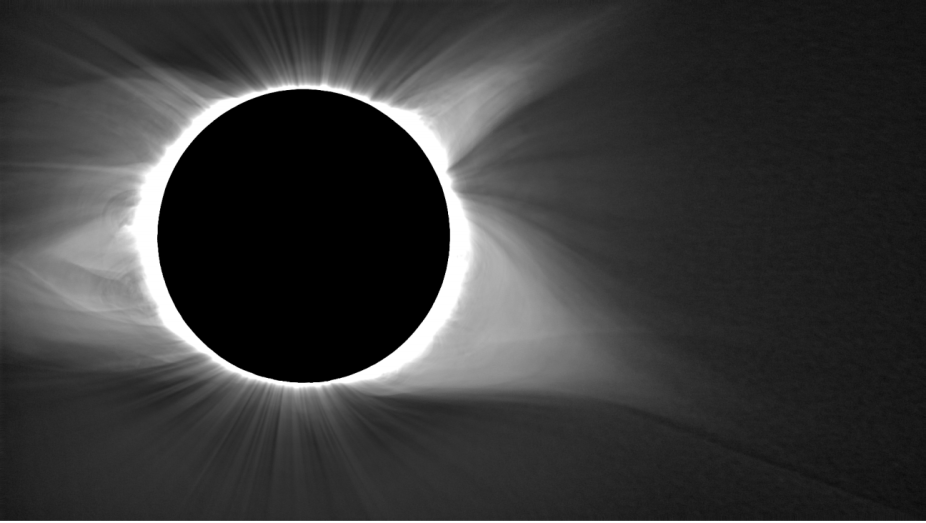Publication Name: ApJ; First HAO Author's Name: Paul Bryans; Authors names as they are listed in article: Amir Caspi, Daniel B. Seaton, Constantine C. C. Tsang, Craig E. DeForest, Paul Bryans, Edward E. DeLuca, et al.
NASA's WB-57 High Altitude Research Program provides a deployable, mobile, stratospheric platform for scientic research. Airborne platforms are of particular value for making coronal observations during total solar eclipses because of their ability both to follow the Moon's shadow and to get above most of the atmospheric airmass that can interfere with astronomical observations.

Fully processed image of the corona generated by stacking many co-aligned, calibrated images and applying a radial filter and multi-scale unsharp mask to bring out details at higher altitudes.
We used the 2017 Aug 21 eclipse as a pathfinding mission for high-altitude airborne solar astronomy, using the existing high speed visible-light and near-/mid-wave infrared imaging suite mounted in the WB-57 nose cone. In this paper, we describe the aircraft, the instrument, and the 2017 mission; operations and data acquisition; and preliminary analysis of data quality from the existing instrument suite. We describe benets and technical limitations of this platform for solar and other astronomical observations. We present a preliminary analysis of the visible-light data quality and discuss the limiting factors that must be overcome with future instrumentation. We conclude with a discussion of lessons learned from this pathnding mission and prospects for future research at upcoming eclipses, as well as an evaluation of the capabilities of the WB-57 platform for future solar astronomy and general astronomical observation.